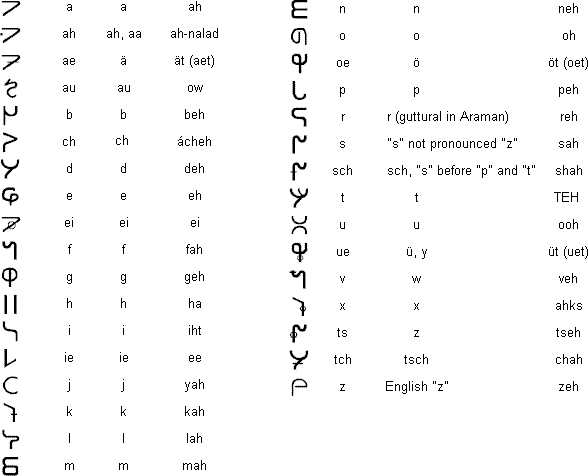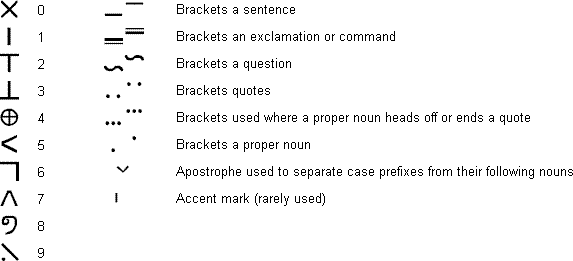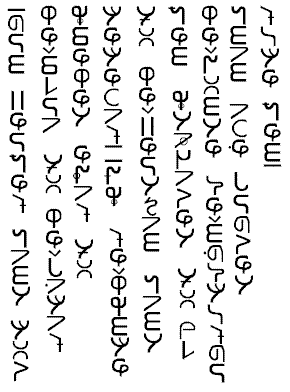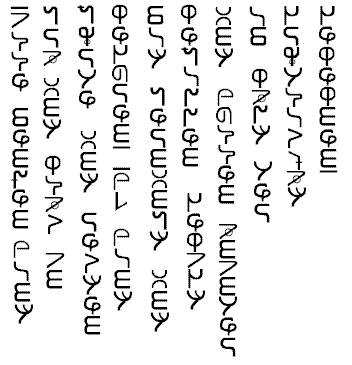
Erekett-Aramansch
The Erekett-Aramansch alphabet was invented by Minstrel Ayreon for
use in her novel, The Way of the Shadow Blade. In the novel
this alphabet is used mainly to write her invented language, Aramansch,
as well as a number of others, and it can also be used to write German.
Notable features
- Direction of writing: left to right in vertical columns
- Used to write: Aramansch and German
Erekett-Aramansch alphabet

Notes
The first column is the Erekett-Aramansch letter, the second is how
Minstrel transliterates it in her novel, the third is how a German might
transliterate it, and the fourth is the name that the Aramansch give to
the letter. Aramansch letter names don’t mean anything unless by coincidence;
they’re simply a way of naming the sound. To some extent they’ve tried
to keep similar-sounding letters from being named alike (“mah” and “neh”)
but it doesn’t always work (“beh” and “peh”). The character of “ah-nalad”
is an example of how the Aramansch handle long vowels. “Nalad” or “long”
vowels are possible for any other vowel and are created the same way.
Diphthongs may be made by combining the vowels here (example: “oj” for
the German “eu”).
Erekett-Aramansch numerals and punctuation

Notes
Aramansch numbers are written vertically in the same fashion as words.
The punctuation shown here is the only kind that exists in Aramansch.
Paired symbols occur at the beginning and end of the marked word or phrase.
“Proper nouns” are defined in the same way as English; adjectives coming
from these proper nouns are not marked. Quote marks appear inside the
sentence/exclamation/question marks. The quote/proper noun mark only
occurs where a proper noun is at the beginning or end of a sentence;
it’s not used on both ends of the sentence if only one end has a proper noun.
Sample text in Aramansch

Transliteration
Orn hervek fand tuch ge’miera tchu ge’pahtak uemeged etsak tchu tetejak.
Schue ke’goente tchu ge’herdauan fand ven uedeibached, tchu zie ge’sunde
le’nohltikor fnan ajeh proched kitte ven.
Translation
All human beings are born free and equal in dignity and rights. They
are endowed with reason and conscience and should act towards one another
in a spirit of brotherhood.
(Article 1 of the Universal Declaration of Human Rights)
Sample text in German

Transliteration
Alle Menschen sind frei und gleich an Würde und Rechten geboren.
Sie sind mit Vernunft und Gewissen begabt und sollen einander im Geist
der Brüderlichkeit begegnen.
Translation
All human beings are born free and equal in dignity and rights. They
are endowed with reason and conscience and should act towards one another
in a spirit of brotherhood.
(Article 1 of the Universal Declaration of Human Rights)
